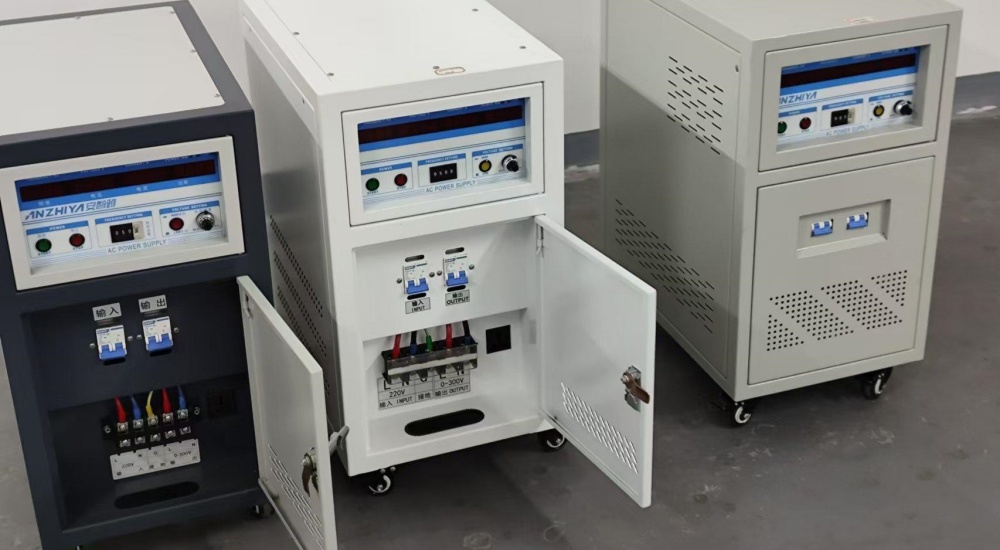A variable frequency power supply is a device that modulates the power supply through a frequency converter to output power of different frequencies. It is widely used in industrial control, motor speed regulation, lighting and other fields. Correct wiring is essential for the normal operation of the variable frequency power supply. When wiring, we need to pay attention to the following aspects: connection of the ground wire, connection of the power line and the load, connection of the signal line and connection of the protection circuit.
Connection of the ground wire
Grounding is to ensure the safe operation of the circuit, avoid electric shock accidents and drift of the ground potential. According to national standards, we should connect the inverter ground wire and the power ground wire to the same grounding point. The ground wire should use a standard yellow-green insulated wire. Whether it is direct grounding or indirect grounding, the connection of the ground wire should be firm and reliable.
Connection of power line and load
The power line of the inverter should select the corresponding wire diameter according to the size of the inverter power to avoid heating, voltage reduction and other problems caused by excessive current due to too small wire diameter. At the same time, we also need to pay attention to the wiring method between the power line and the load. When connecting the load, a dedicated connector should be used to ensure that the connection is firm and reliable to avoid faults caused by poor contact or loose contact.
Connection of signal lines
The inverter usually needs to communicate with external sensors, controllers and other devices, which requires the use of signal lines for connection. For different signal lines, we need to connect them correctly according to their functions. For example, for the signal line of the temperature sensor, we should use shielded wires to avoid electromagnetic interference; for the signal line of the controller, we need to choose the wiring method according to the specific control signal type and ensure the stability and reliability of signal transmission.
Connection of protection circuit
In order to protect the inverter and the load, we usually also need to connect the protection circuit at the input and output ends of the inverter respectively. For the protection circuit at the input end, we need to use filters, relays and other devices to prevent noise and interference from external power supplies; for the protection circuit at the output end, we need to use overcurrent protectors, overvoltage protectors and other devices to protect the load from damage caused by excessive voltage and current.
In the actual wiring process, we also need to refer to the instruction manual of the inverter and relevant electrical specifications for wiring. In addition, we also need to pay attention to the following points: avoid wiring in high temperature, humidity or corrosive gas environments; avoid arcing during wiring to avoid fire; avoid using damaged wires or connectors, etc.
IDEALPLUISNG Power Expert:
We focus on the research and development, sales and services in the fields of DC-DC power modules, AC-DC rectifier modules, DC-AC inverters, AC power supplies, DC power supplies, LED power supplies, chargers, rectifier systems, etc., providing personalized, efficient, reliable and cost-effective power solutions for all walks of life.
Thank you for considering our services.








